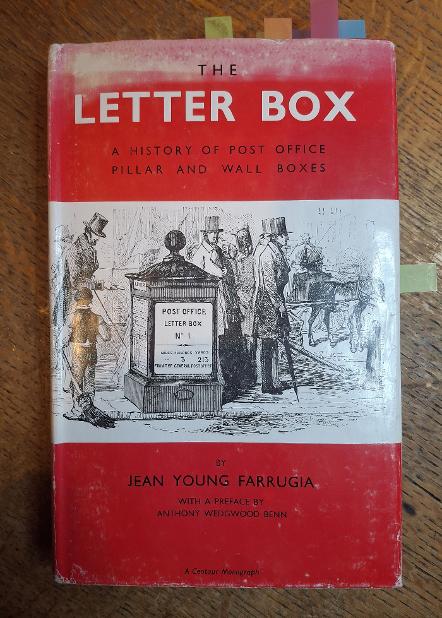
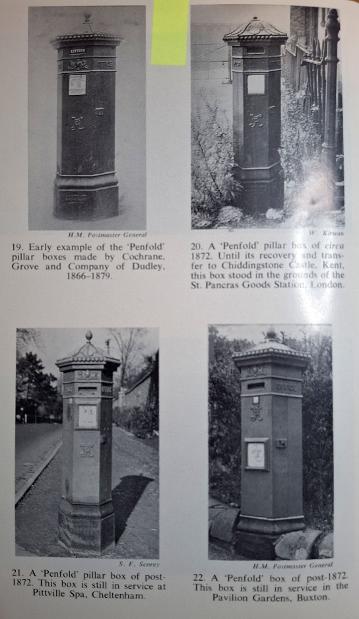
The Letter Box, A History of Post Office Pillars and Wall Boxes
By Jean Young Farrugia, preface by Anthony Wedgwood Benn
Well having read “Chimney Pots and Stacks - An Introduction to Their History Variety and Identification” by Valentine Fletcher, I was inspired to purchase the book advertised on the back called “The Letter Box”.
The book was published in 1969. It provides a wealth of knowledge about the history, types, and method of construction of the traditional British letter boxes. Usually coloured ‘Pillar Box Red’, they were also coloured ‘Air-Force’ blue, as discussed further below.
Did you know that roadside post boxes (those being post boxes not located at a post station), are said to have been first proposed by Charles Reeves, a Riding Surveyor of Scotland’s post in 1834. Further, that before the adoption of the Uniform Penny Postage in 1840, which allowed for payment of the postage in advance with the application of a stamp to the letter, that payment was made by the addressee on delivery of the post.
There are no drawings of the first ever roadside pillar boxes, but we have the following extract from the Jersey Times, dated 26 November 1852, which provides the following description:
“They are made of cast-metal, are about four feet high and are sexagonal. On three of the sides, near the top, are the Royal Arms; on two sides the words Post Office; on the other the words Letter Box; with a protected receiver. A sliding cover allows the collector to unlock the receiver and remove its contents. They are painted red and filled in solid granite blocks two feet deep and raised four inches from the ground.”
From an Irish perspective, you may be interested to know that Ireland received its first pillar boxes in 1855, when the Surveyor of the Northern District in England, was instructed to send five post boxes to the Surveyor of the Northern Counties of Ireland, a one Mr Trollope. They were then erected in May, Ballymena, and the remaining three were placed in Belfast.
The post box design and construction wasn’t standardised until 1857, with a national standard applied in 1859.
In November 1929 the Post Office provided post boxes specifically for Airmail. To encourage users to use air mail post boxes and save the Post Office sorting and separating the air-mail from standard mail, they advertised later collection times for the air-mail post boxes, used special mail vans branded with ‘Air-Mail’ to collect that post, and painted both the vans and the boxes ‘Air Force’ blue.
In 1947, a Telepill post box was invented, to include a post box, a pair of stamp selling machines, and a telephone engineer’s cross-connection frame. There was some antagonism to the new boxes from Local Authorities, and there was also a high cost to production. Further any telephone engineers working in the cabinet would need to work or kneel on the road, due to there location at the edge of the path, unlike the original telephone cabinets which were on the inside of the path. And so, you will be disappointed to hear that the idea was scrapped.
The book talks about letter boxes of the future. These were rectangular, and made from a frame sheeted with steel panels, with an internal plastic lining. They were expected to save money, and field trials were due in 201 locations. Exciting stuff.
If you really like these old traditional post boxes, and want to know more about their history, this is the book for you.

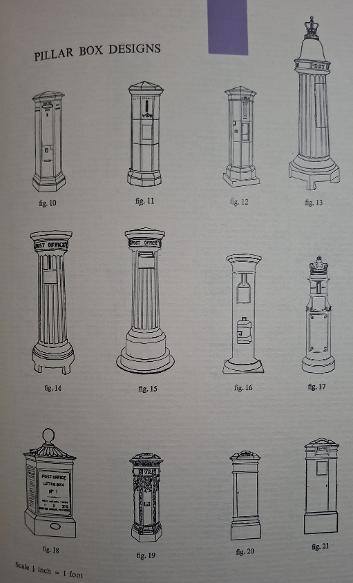
What I have taken from this book is an appreciation for the means and methods in which societies and systems can change and innovate, and the mutual benefit that completely different industries can provide one another. A rising tide lifts all boats. In particular this book highlights the rapid change mankind has seen during the last 200 years. A centralized and standardised Post Office system undoubtedly helped commercial trade and business, and also had significant social benefits for personal communication. The postal system itself, increased its effectiveness; example being the provision of pillar boxes, the invention of the prepaid stamp, and the branding of air-mail to encourage consumer use; they also tried to continue to innovate with the newer technology of the 1960's. From Riding Surveyors in the early 1800's who found it difficult to persuade HQ to put a post box on a steam boat, to air-mail in the 1930's, and the extraordinary advances made to this day. If nothing else, this book will help give you some perspective on the way industry and society changes.
For further research on Letter Boxes, I would start here, The Letter Box Study Group, and further reading such as:
- A Guide to Rare British Letter Boxes, by Martin Robinson, and
- Old Letter Boxes, by Martin Robinson
- An education pack for kids, provided by The Letter Box Group
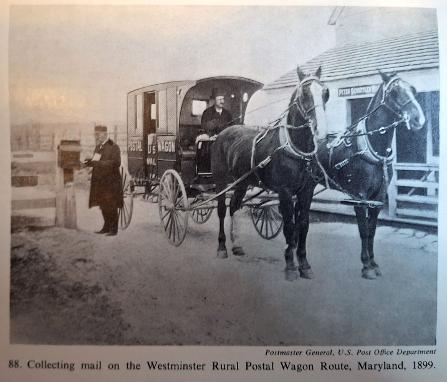
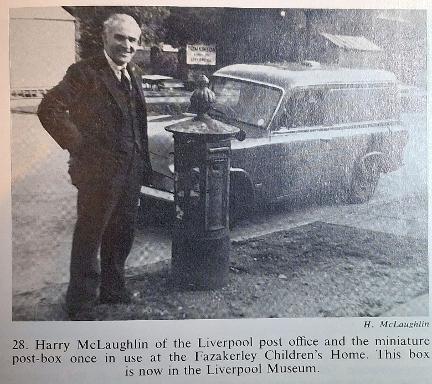
Author: Noel Clarke
Date: 6 March 2025
© Copyright Noel Clarke
Privacy Policy